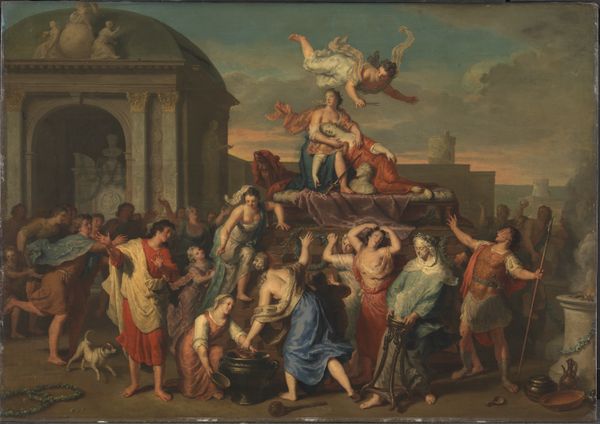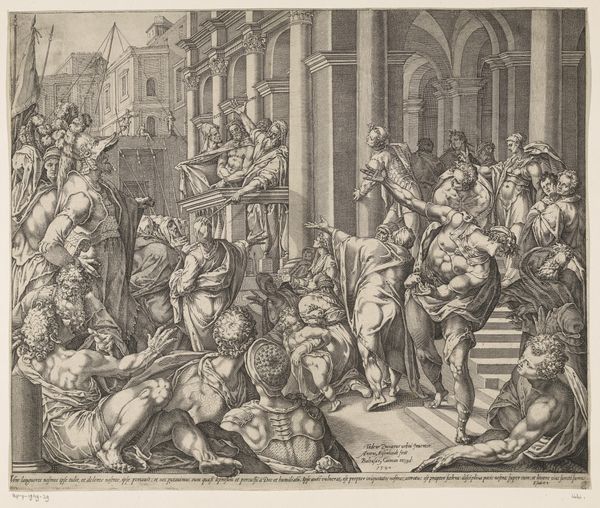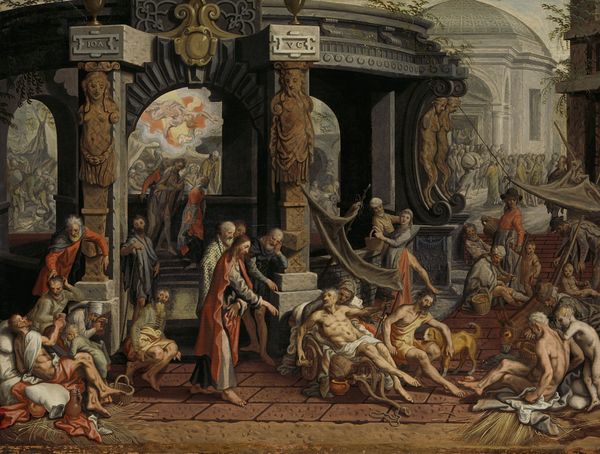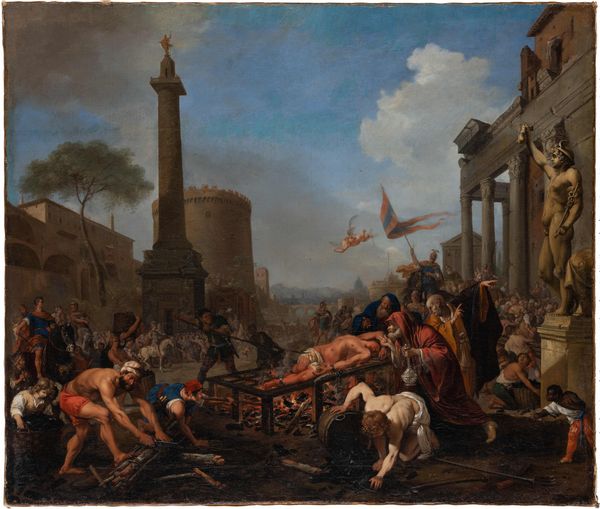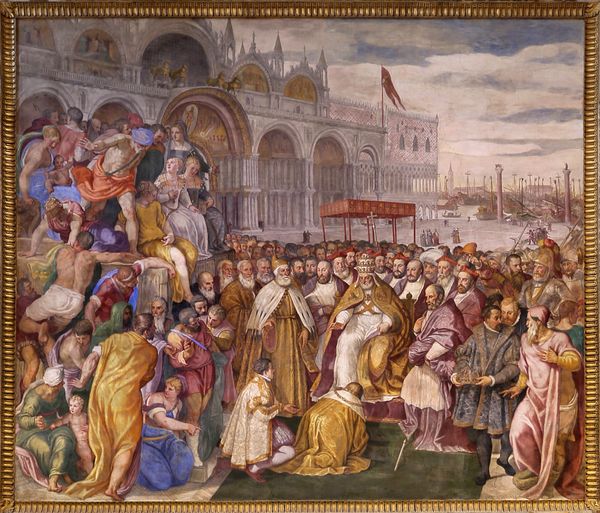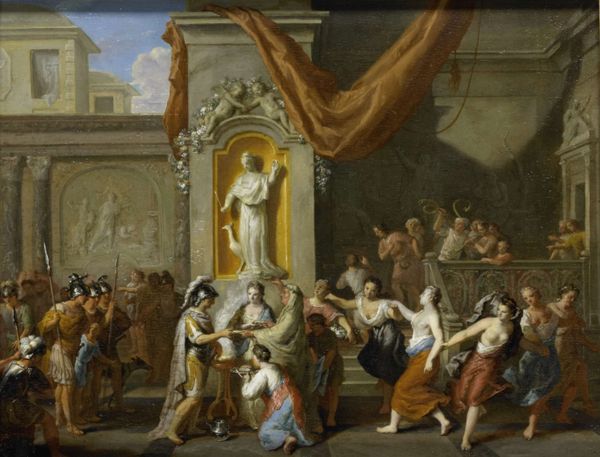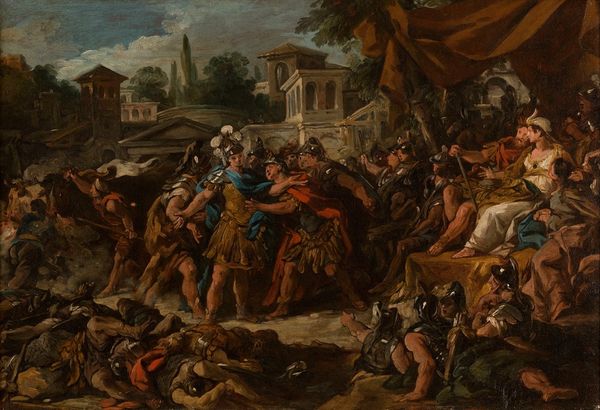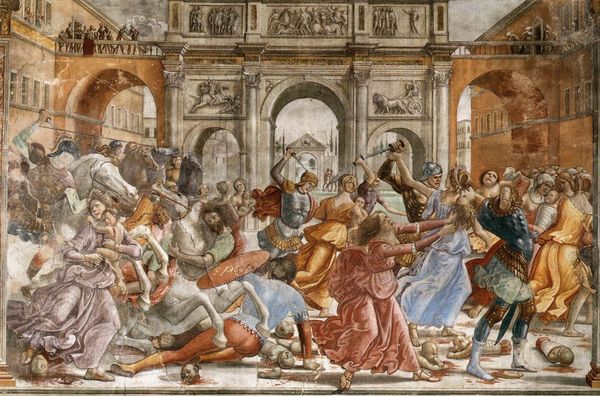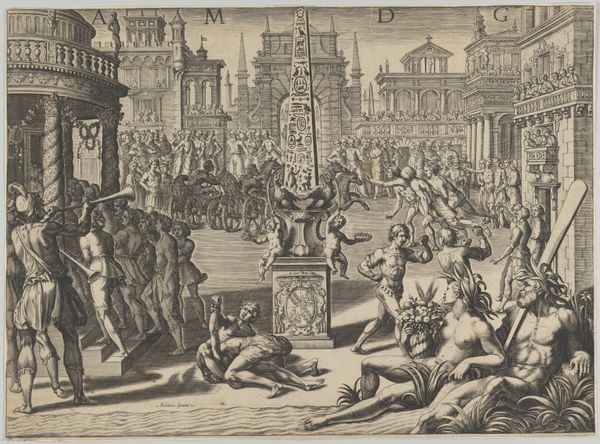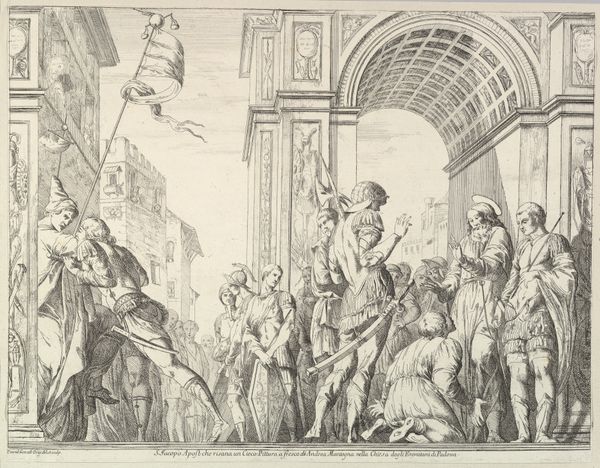
painting, oil-paint
#
allegory
#
baroque
#
painting
#
oil-paint
#
landscape
#
figuration
#
oil painting
#
mythology
#
history-painting
#
academic-art
Copyright: Public domain
Claude Déruet's canvas depicts 'The Rape of the Sabine Women,' a foundational myth of Rome. Painted in the 17th century, amidst Europe's dynastic ambitions, this work isn't just a historical record, but a reflection on power, gender, and the construction of identity. Look closely at the bodies: the Sabine women are caught in moments of terror and resistance, while the Roman men display an aggressive assertion of dominance. The composition is full of movement, a swirl of bodies enacting the drama of conquest. This image forces us to confront the uncomfortable reality that the origins of a great civilization are rooted in violence against women. How does the artist negotiate the charged issues of sexual violence and the foundation of a new society? Does Déruet challenge or perpetuate the narrative of women as spoils of war? It’s a stark reminder of how power dynamics can be solidified through both historical narrative and artistic representation.
Comments
No comments
Be the first to comment and join the conversation on the ultimate creative platform.
